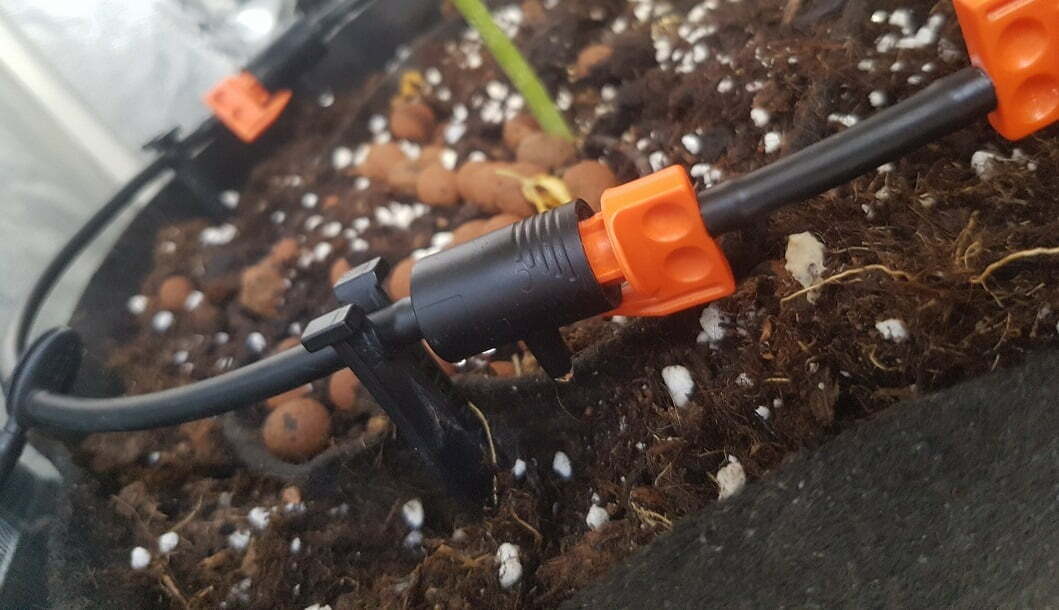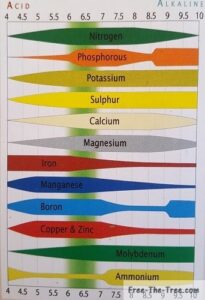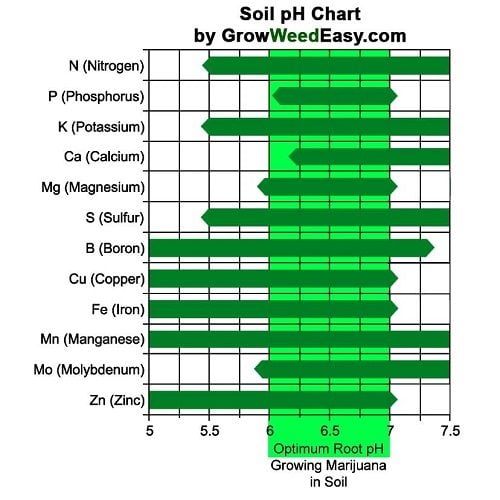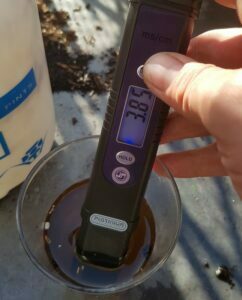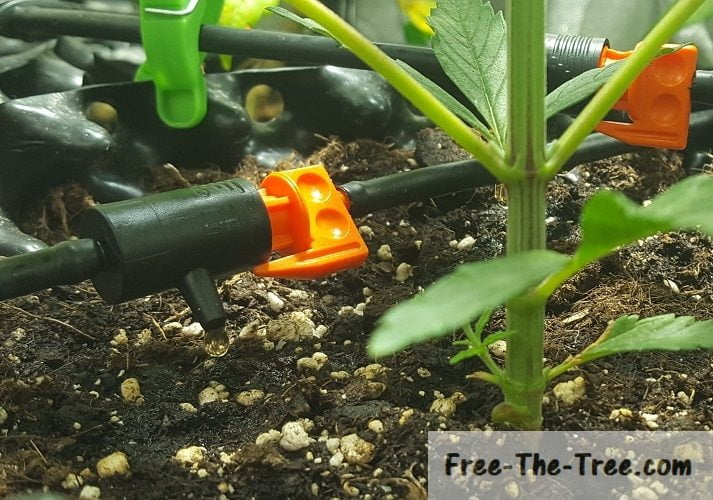How much water to give your plants
The amount of water to give to your plan depends on how much soil you have. In general you give about a quarter of the volume of soil you have. Here are some of the most common sizes used:
- For a 1L pot give 0,25L of pH’d water
- For a 4L pot give 1L of pH’d water
- For a 12L pot give 3L of pH’d water
- For a 30L pot give 7,5L of pH’d water
- And so on
Your should see about 20% run off in your tray, that water will be sucked back up in the next hours.


